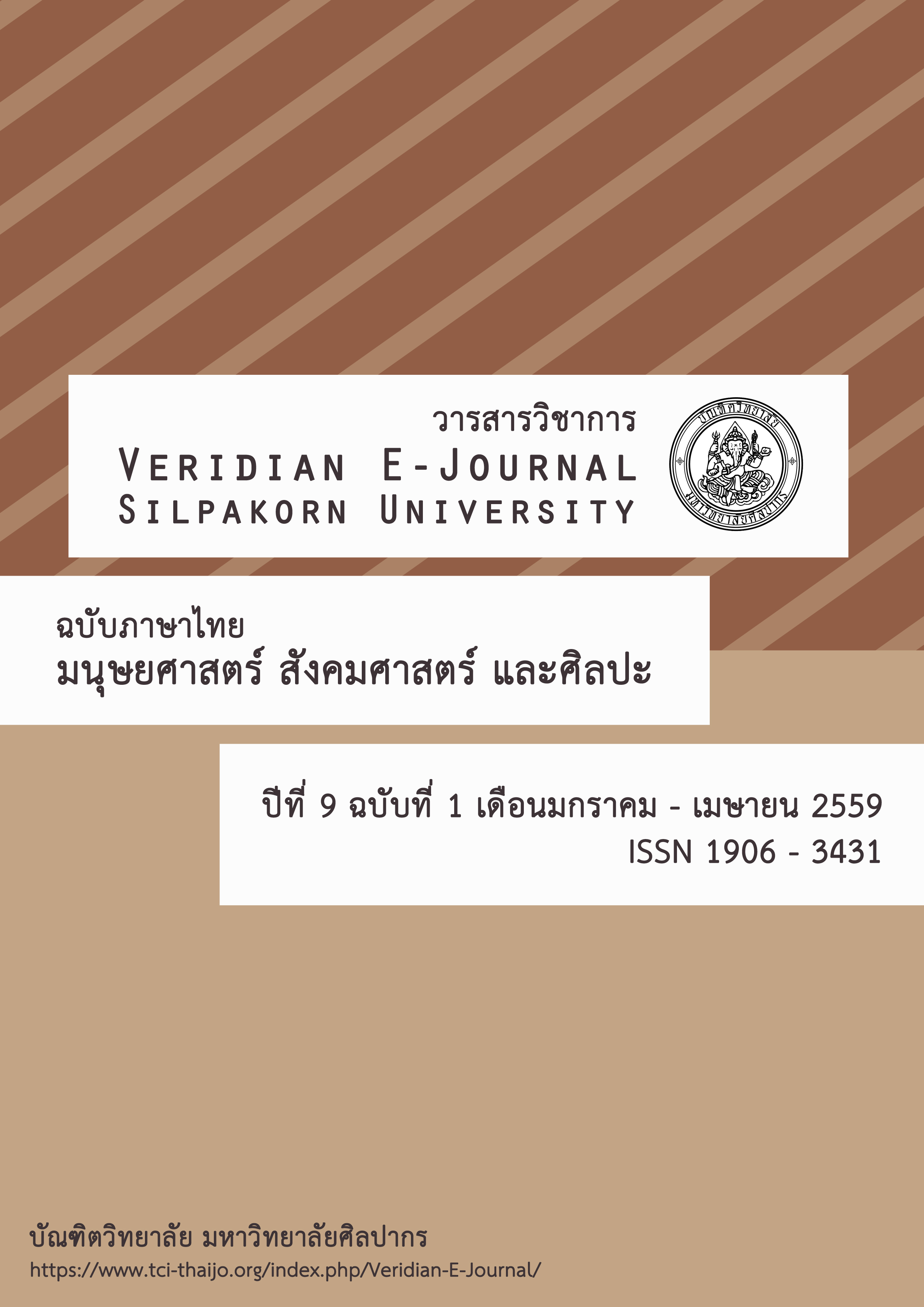โมเดลเชิงสาเหตุที่ส่งผลต่อทักษะชีวิตของนักเรียนชั้นมัธยมศึกษาตอนปลาย ในกรุงเทพมหานคร
Main Article Content
บทคัดย่อ
บทคัดย่อ
การวิจัยครั้งนี้มีวัตถุประสงค์เพื่อพัฒนาและตรวจสอบโมเดลเชิงสาเหตุที่ส่งผลต่อทักษะชีวิต นักเรียนชั้นมัธยมศึกษาตอนปลายในกรุงเทพมหานครที่พัฒนาขึ้นกับข้อมูลเชิงประจักษ์ กลุ่มตัวอย่างในการวิจัย คือ นักเรียนชั้นมัธยมศึกษาตอนปลายในกรุงเทพมหานครปีการศึกษา 2557 จำนวน 760 คน ตัวแปรที่ใช้ในการวิจัยประกอบด้วย ตัวแปรภายในแฝง 1 ตัวแปรคือ ทักษะชีวิต ตัวแปรภายนอกแฝง 3 ตัว คือ ปัจจัยส่วนบุคคล ปัจจัยภายในและปัจจัยภายนอก วัดจากตัวแปรสังเกตได้ 14 ตัว เครื่องมือที่ใช้ในการวิจัย คือ แบบสอบถามที่ผู้วิจัยสร้างและพัฒนาขึ้นเกี่ยวกับปัจจัยเชิงสาเหตุที่ส่งผลต่อทักษะชีวิตของนักเรียนชั้นมัธยมศึกษาตอนปลายในกรุงเทพมหานคร ซึ่งมีค่าสัมประสิทธิ์ความเที่ยงตั้งแต่ 0.696 ถึง 0.941 วิเคราะห์ข้อมูลด้วยสถิติบรรยาย และสัมประสิทธิ์สหสัมพันธ์แบบเพียร์สัน ด้วยโปรแกรมสำเร็จรูป
ผลการวิจัยที่สำคัญสรุปได้ดังนี้
1. โมเดลมีความสอดคล้องกับข้อมูลเชิงประจักษ์โดยให้ค่า= 46.11, df = 41, p = .269, GFI = 0.99, AGFI = 0.98 และ RMR = 0.013 ตัวแปรในโมเดลสามารถอธิบายความแปรปรวนของทักษะชีวิต นักเรียนชั้นมัธยมศึกษาตอนปลายในกรุงเทพมหานคร ได้ร้อยละ 85
2. ปัจจัยที่มีอิทธิพลทางตรงสูงสุดและอิทธิพลรวมสูงสุดทักษะชีวิตของนักเรียนชั้นมัธยมศึกษาตอนปลายในกรุงเทพมหานคร ได้แก่ปัจจัยภายใน
Abstract
The purpose of this research were to study 1) the causal effect to life skills of the students studying in senior high school in Bangkok, 2) develop of a causal model of life skills with students who studying in hight Bangkok and to examine the goodness of fit of the model to the empirical data. The research sample consisted of 760 students who studying in hight Bangkok; the variables consisted of one endogenous latent variables: life skills; and three exogenous latent variables: personal, internal and external factor. These latent variables were measure by 14 observed variables. Data were collected by questionnaire reliability from 0.696 - 0.941 and analyzed by using descriptive statistics, Pearson’s product moment correlation were analyzed by employing.
The major findings were as follows:
1. The structural equation model was valid and fit to the empirical data. The model indicated that the Chi-square goodness of fit to test was 46.11, df = 41, p = 0.269, GFI = 0.99, AGFI = 0.98 and RMR = 0.013. The model accounted for 85.0% of variance in effectiveness of life skills.
2. The structural equation model showed that variable having maximum direct effect and total effect to life skills was internal factor

